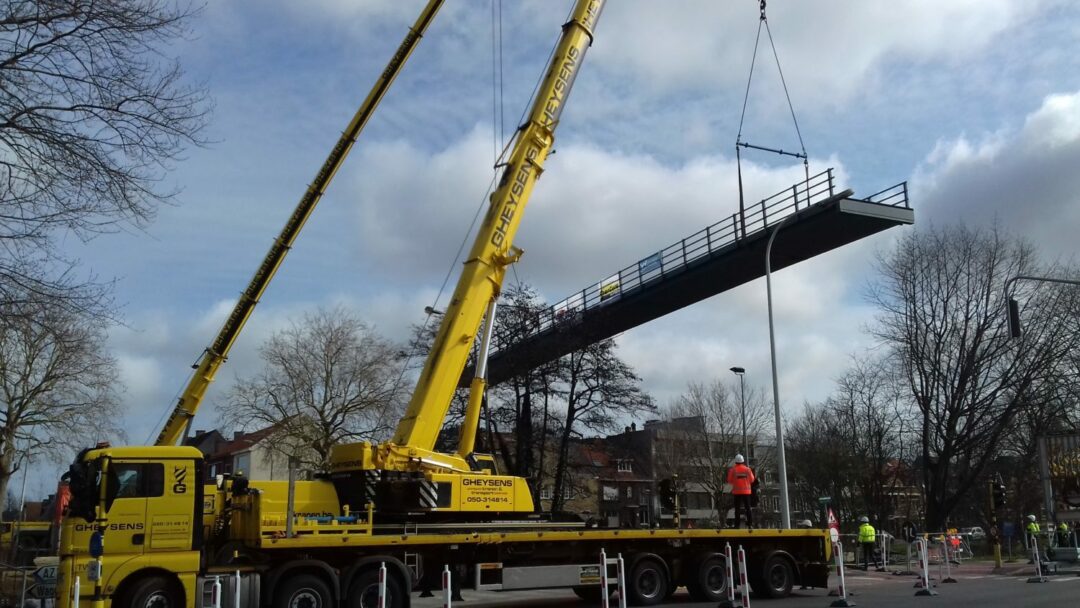BRUGGE (B) - Today in the early morning the longest composite bridge in the world was placed. During the night before, the 42-meter prefabricated structure was transported from Rotterdam (NL) by means of an escorted transport over the Dutch and Belgian roads to Bruges, before it could be placed immediately at dawn.
To replace the aging wooden Canadabridges in Bruges, Belgium, FiberCore Europe delivered two prefabricated composite bridges, including railings, on behalf of De Vlaamse Waterweg and West Construct/Besix. With a length of 42 meters, it is the longest one-piece composite bicycle/pedestrian bridge in the world. This second bridge is a fraction longer than the first bridge, which was transported and installed a month earlier, breaking - once again - the world record.
Durable solution
These durable bridges have a lifespan of more than 100 years and require virtually no maintenance. The composite bridges are extremely robust, lightweight and durable. The bridges are impervious to external influences such as rust, rot and corrosion from de-icing salts. Graffiti is also easy to remove from the bridges.
A special transport
The bridges are manufactured at FiberCore Europe's plant in Rotterdam (NL) and make their journey to Bruges by road. This is obviously a very special transport and in order to avoid inconvenience, it was carried out during the night of March 25-26, 2019 by the Dutch transport company Westdijk BV. This convoi exceptionnel with a total length of 47.8 meters was supported by two accompanying vehicles and here and there a lamppost had to be removed. By comparison, the length of an average Boeing 737 is 35 meters!
In the early morning of March 26, the only 22-ton bridge arrived in Bruges, where it was lifted into position by means of a crane stationed on the adjacent concrete bridge. After placement, the bridge was in fact ready for immediate use.
Sensors
The composite bridges in Bruges are a pilot project with great potential for the rest of Flanders. Sensors are being installed in the second cyclist/pedestrian bridge. The Flemish government hopes to use these sensors to learn a lot about the design and behavior of these bridges, so that more work can be done with composite as a construction material in the future. Expertise Concrete and Steel of the Department of Mobility and Public Works was closely involved in the preliminary design of both bridges.


